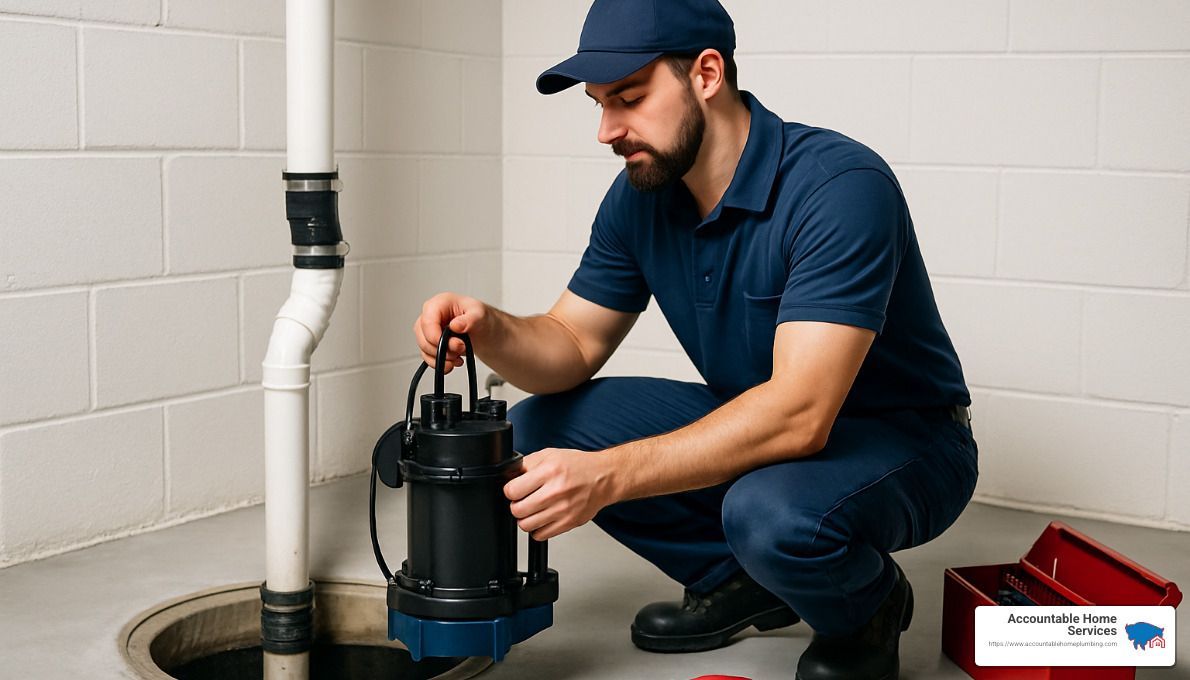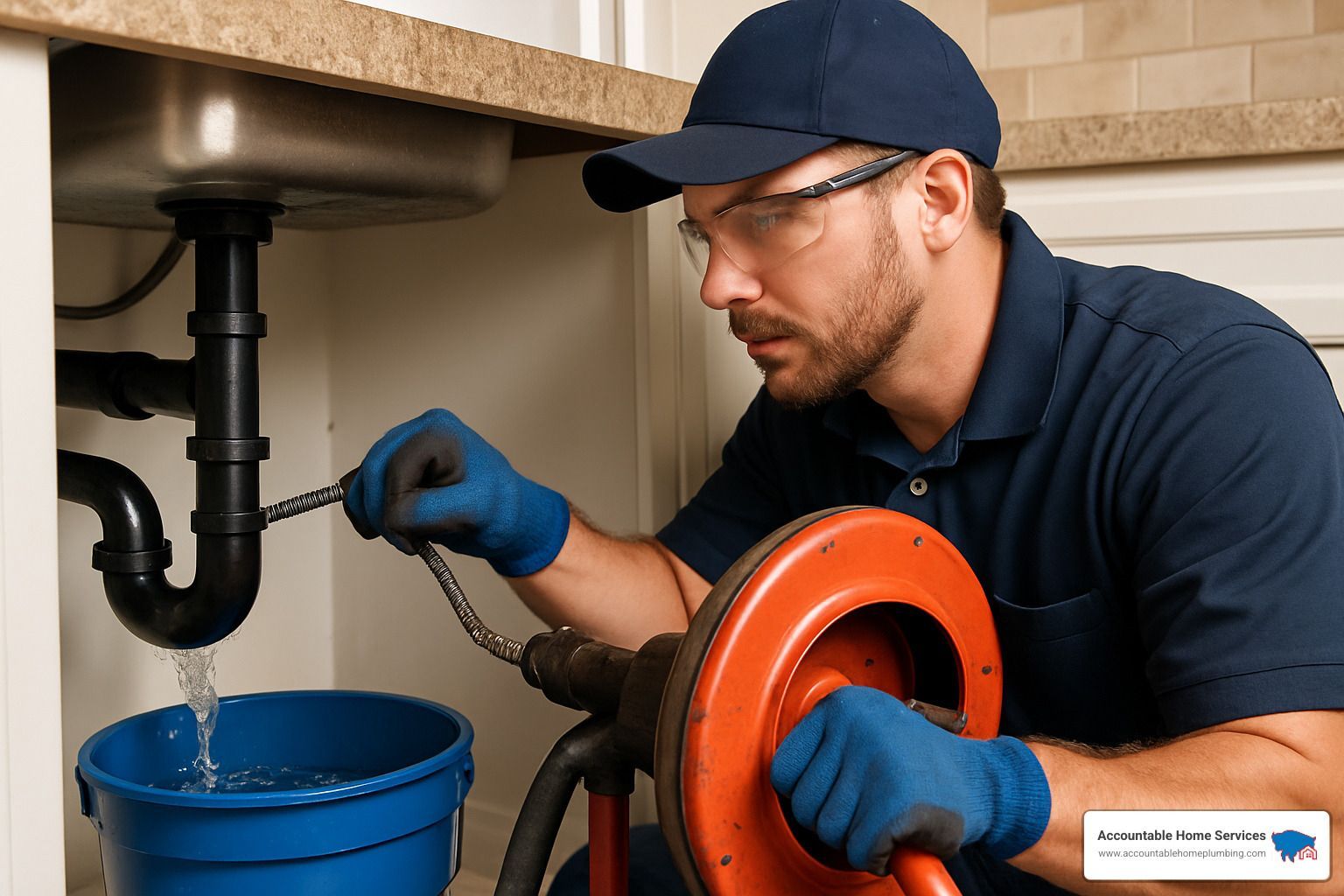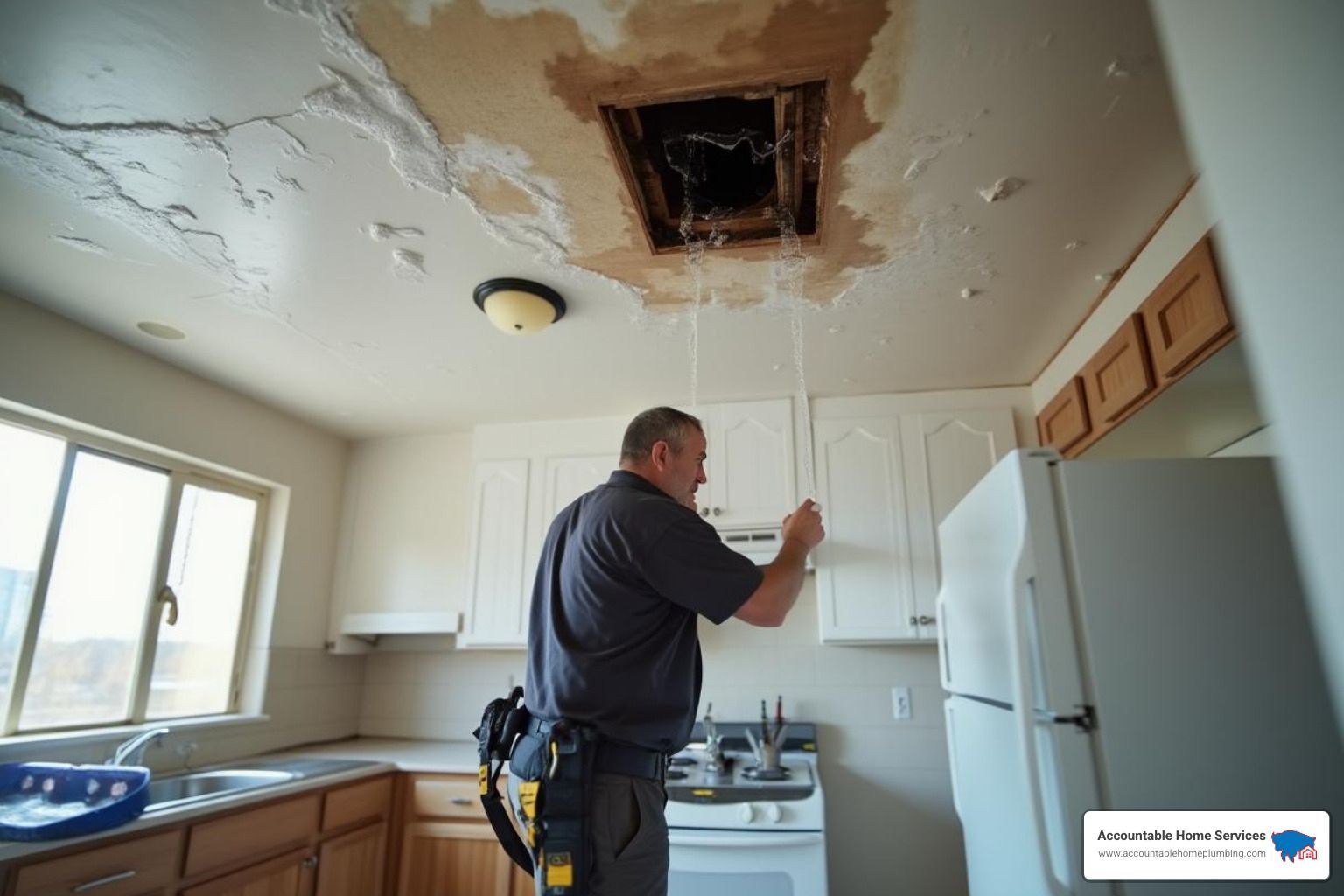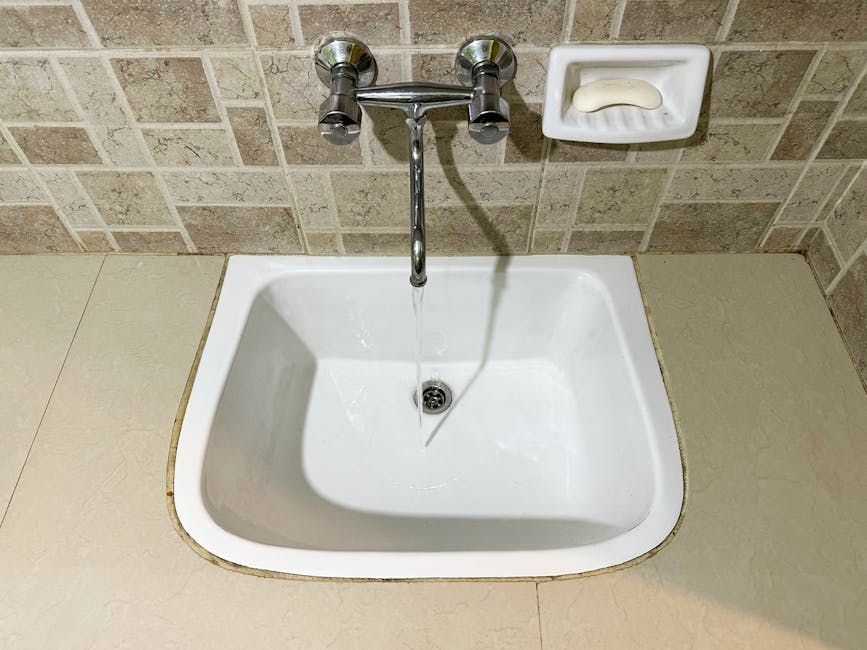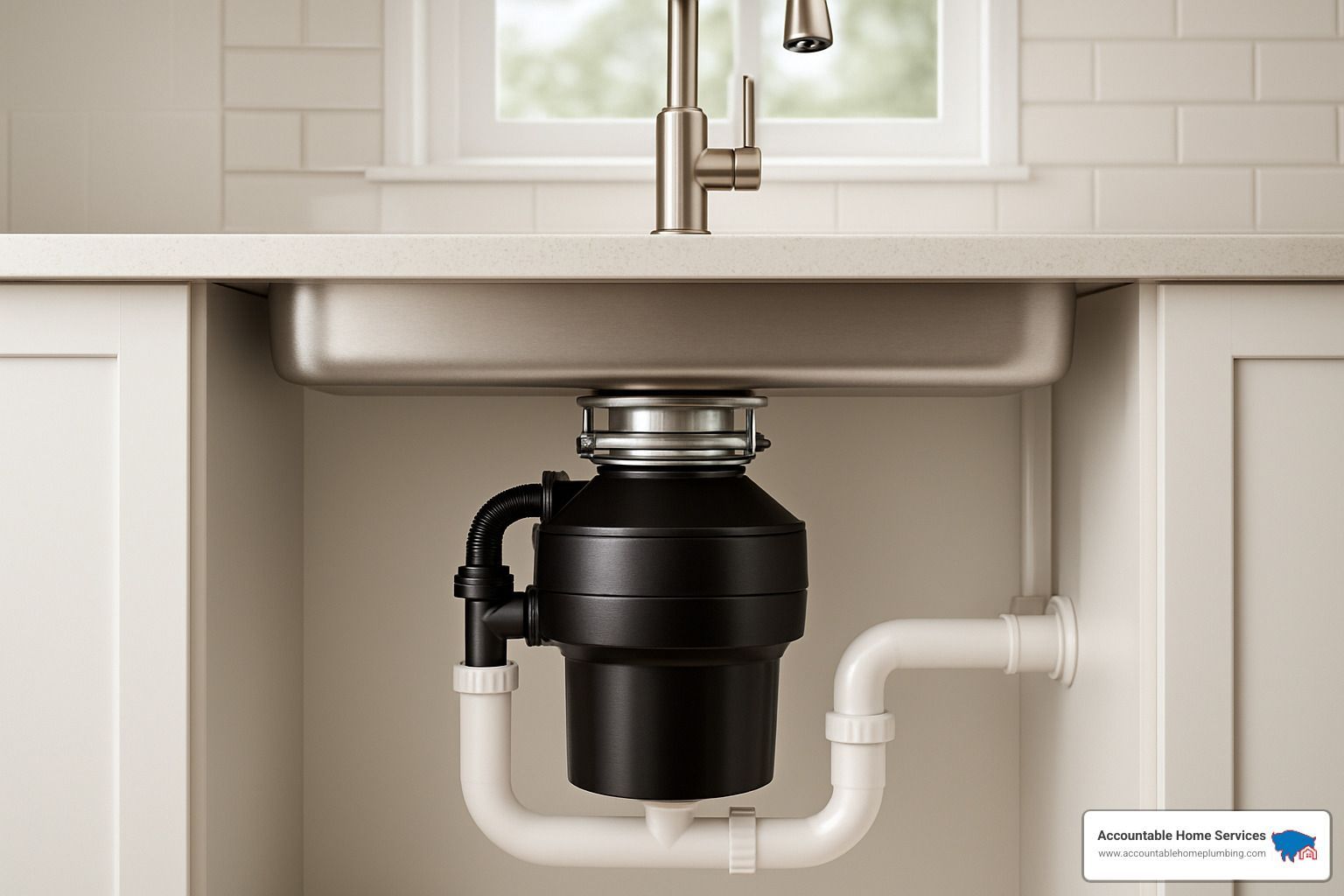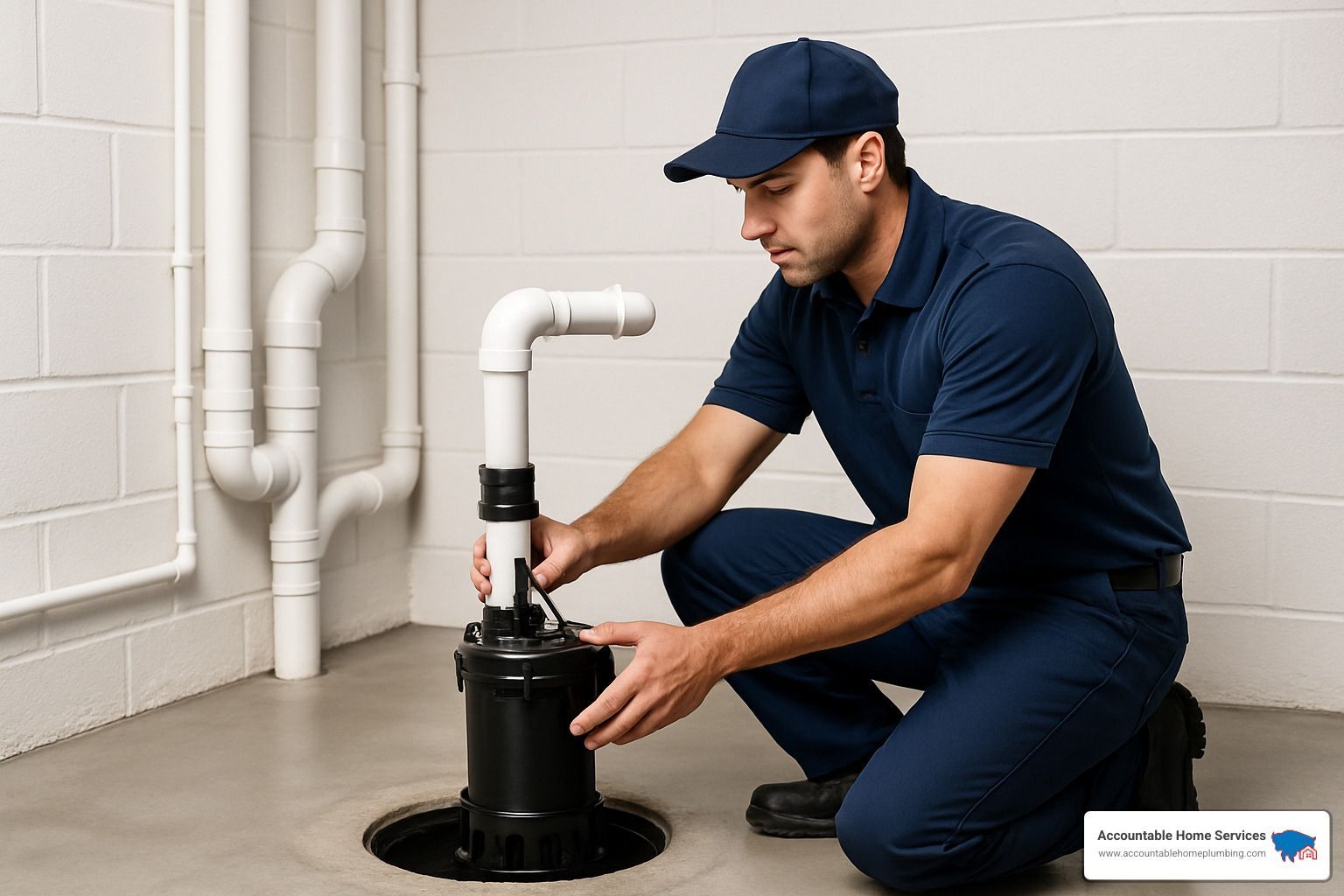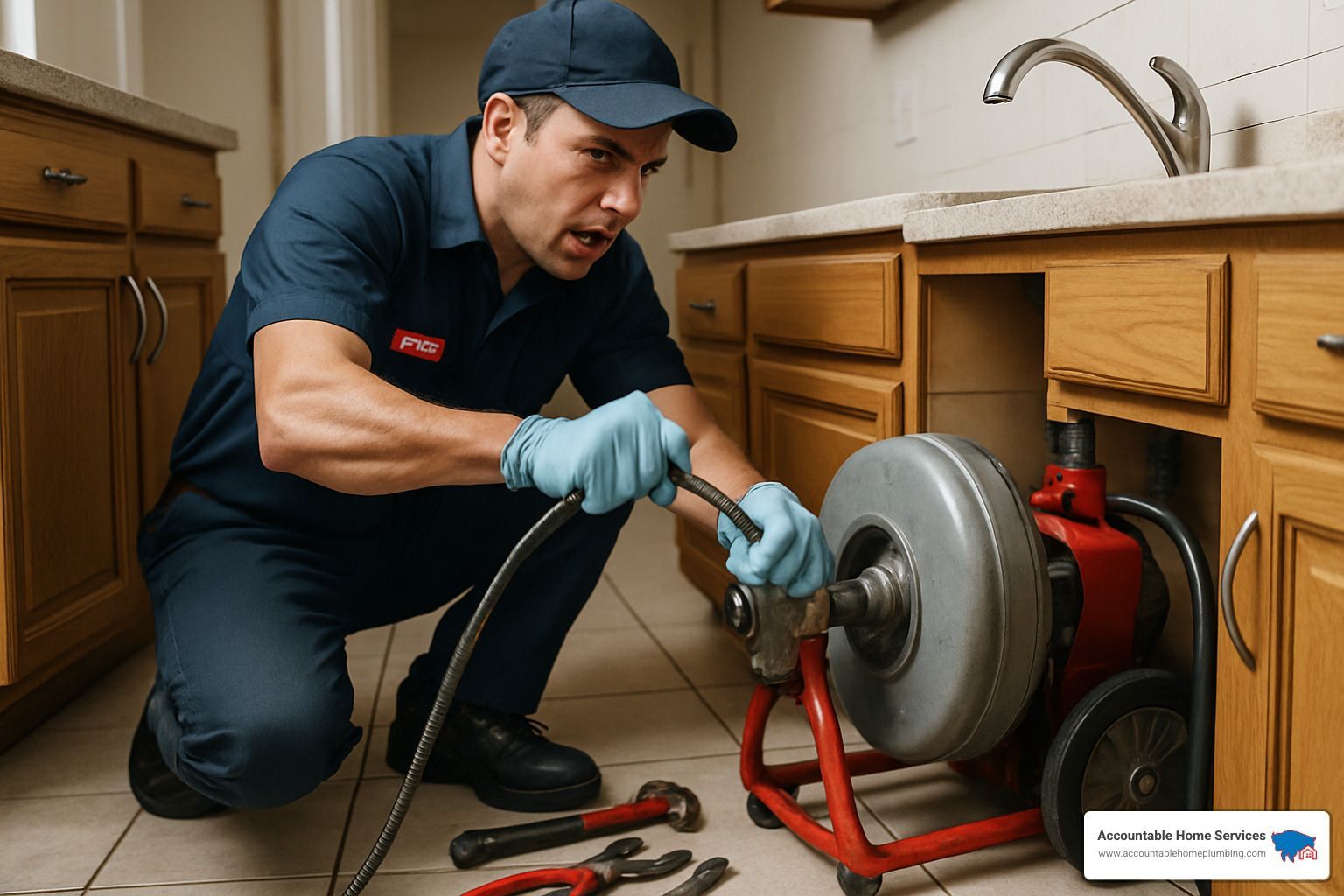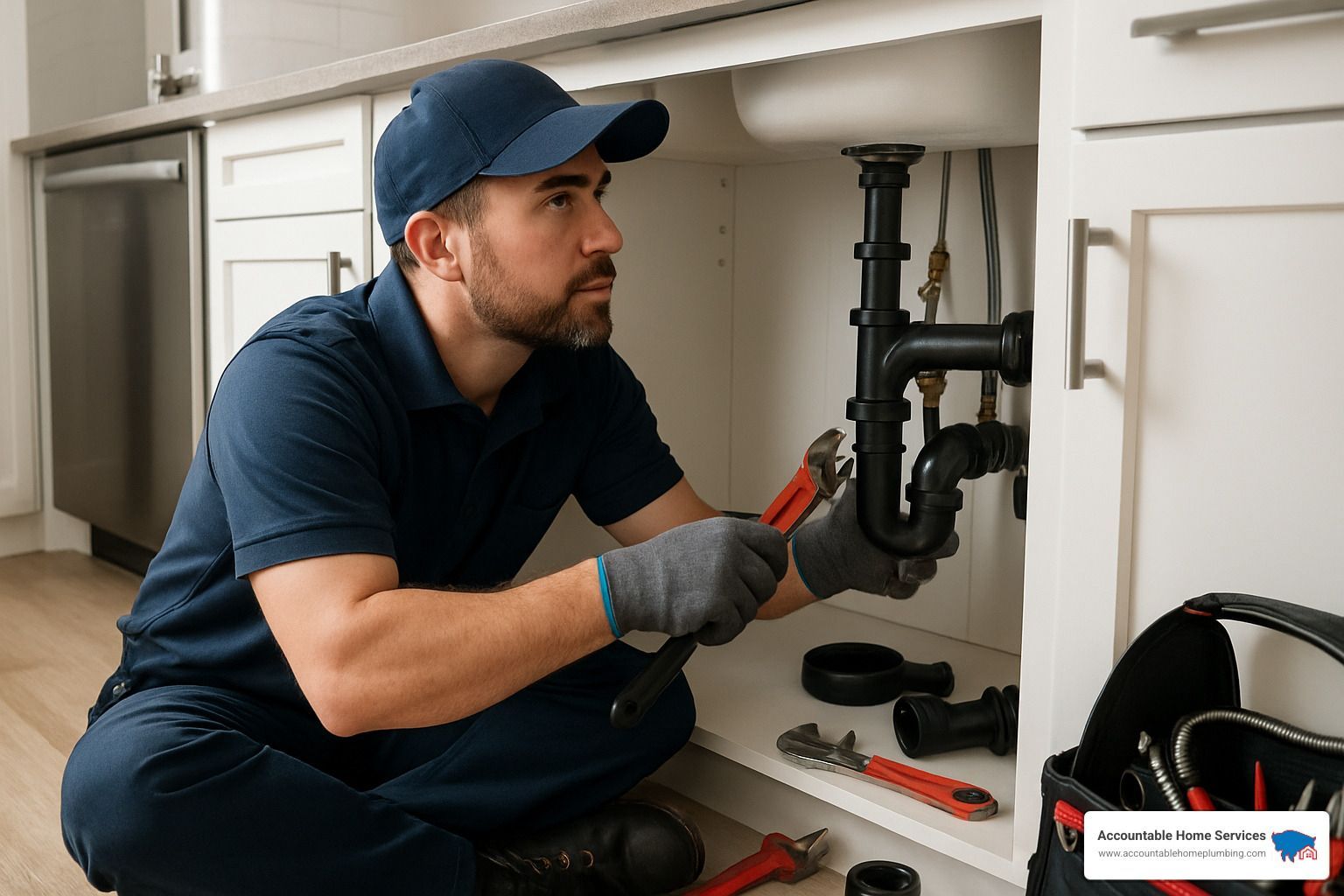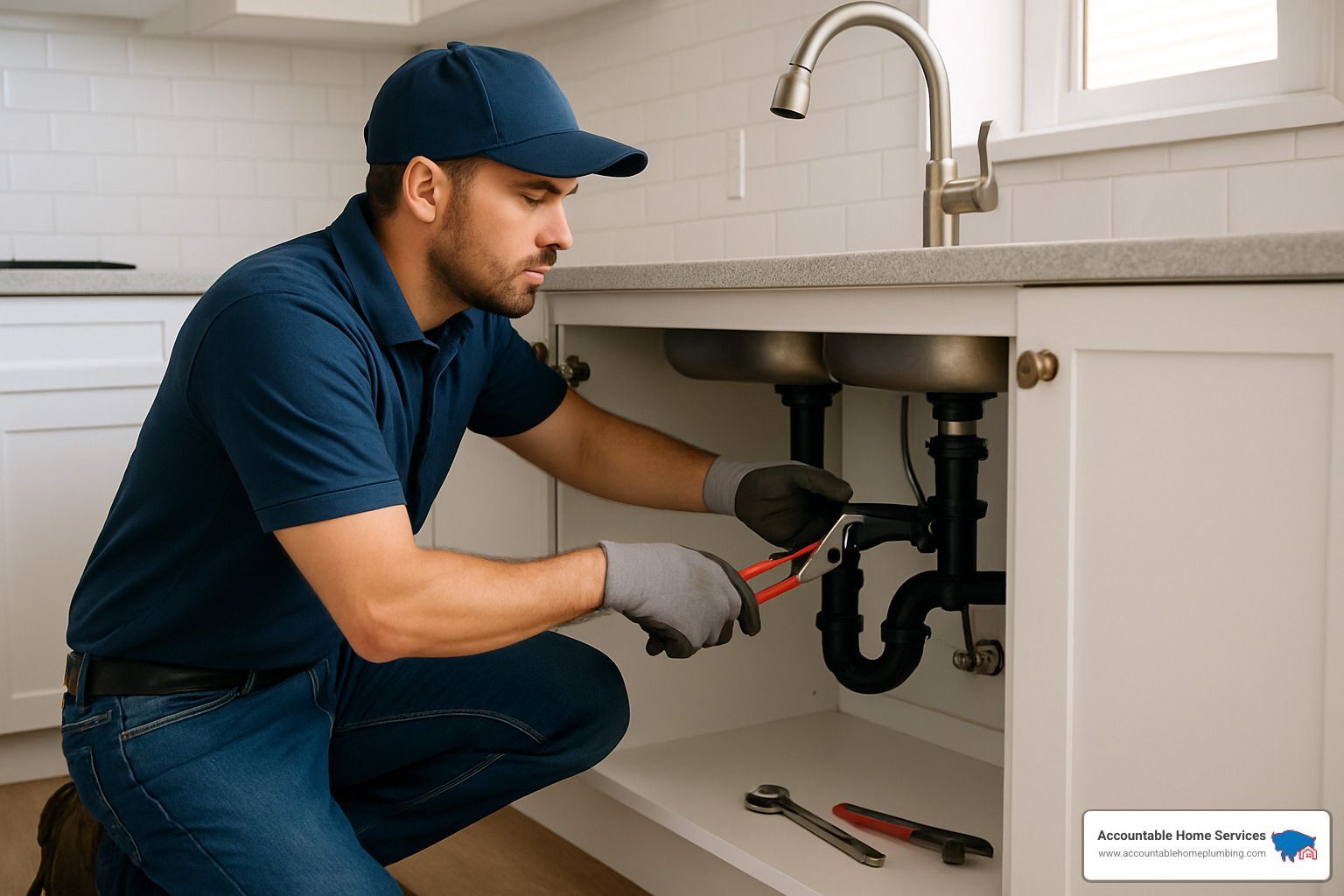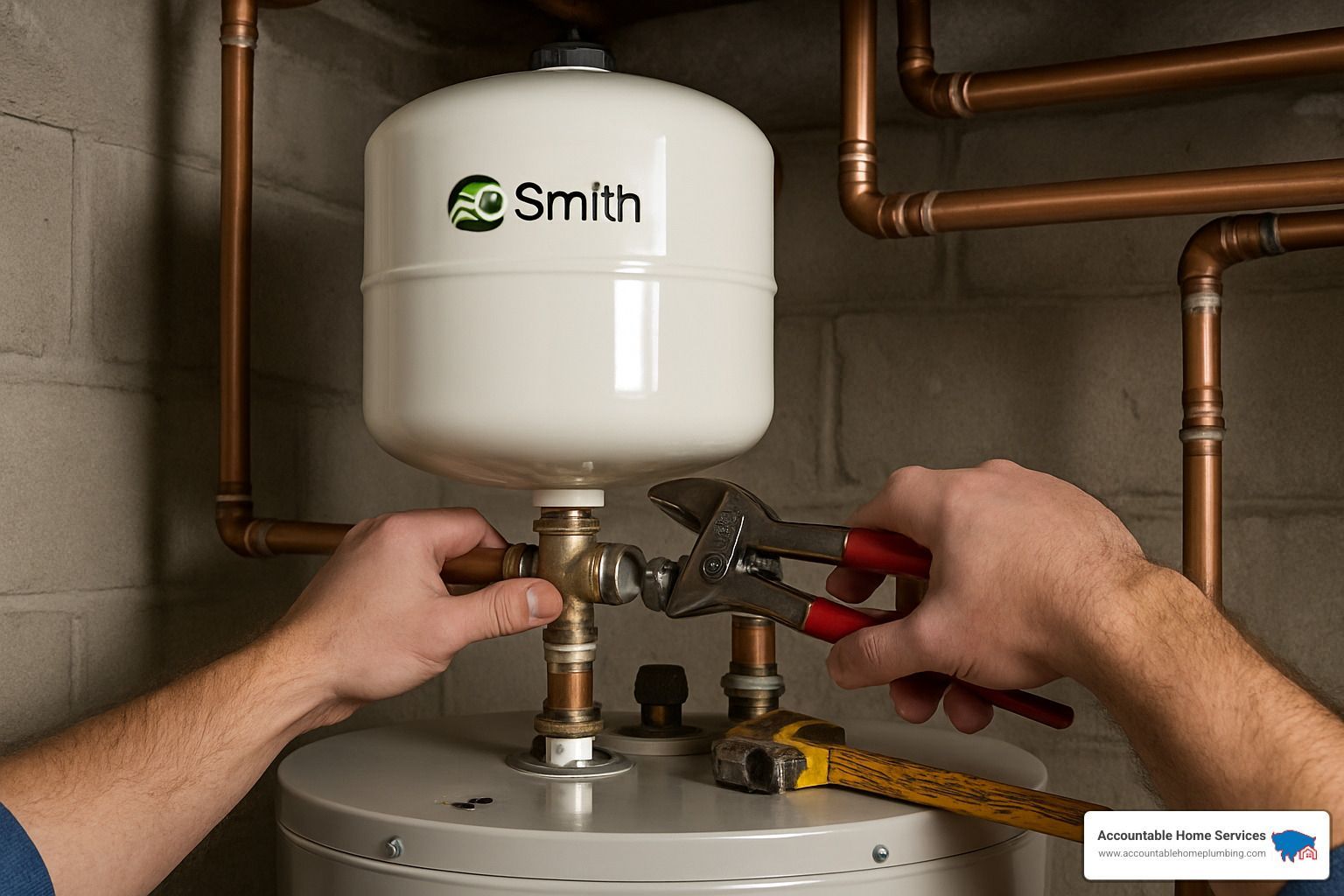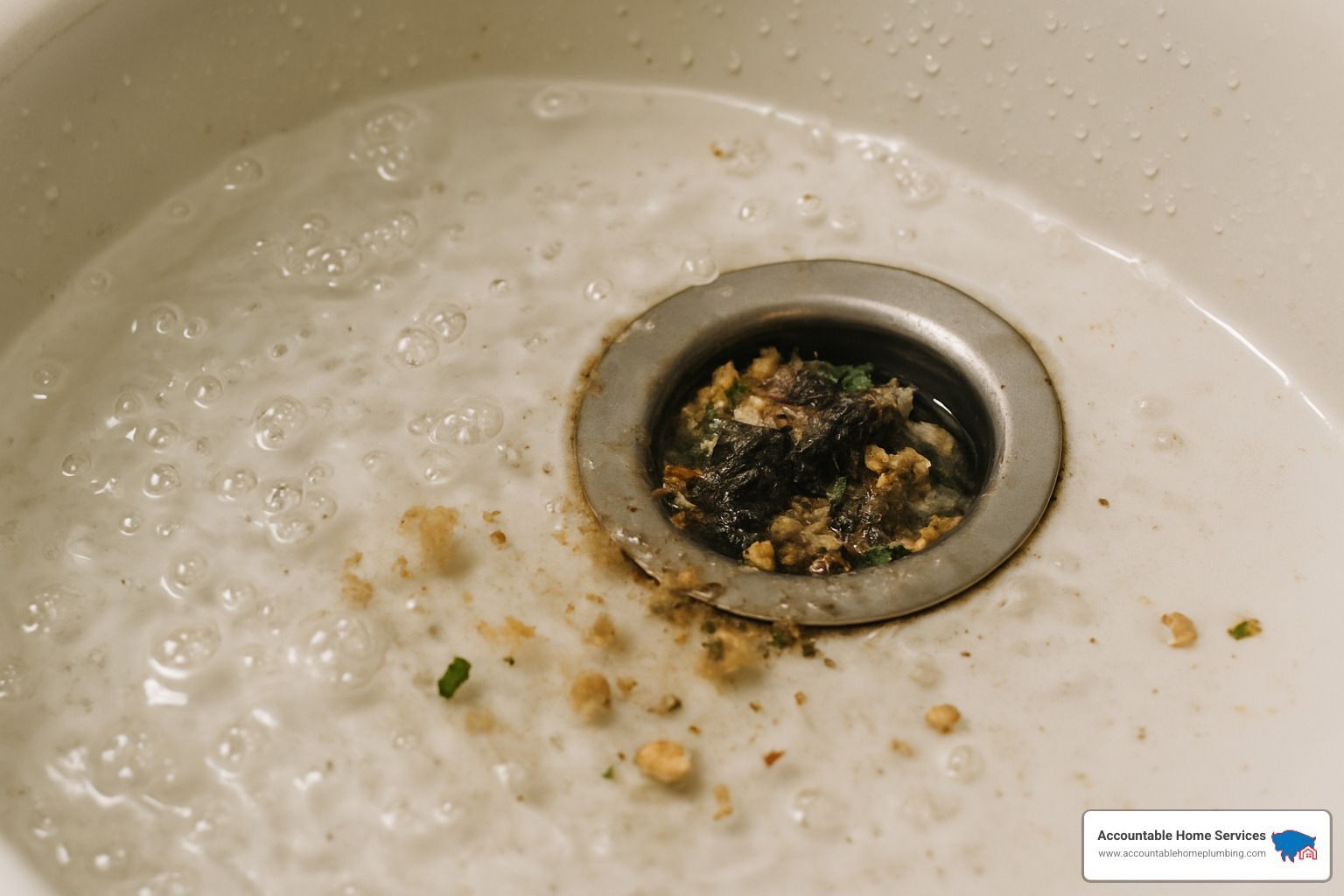Sump Pump Survival: A Guide to Regular Maintenance
Why Sump Pump Maintenance Matters
Let's face it—nobody thinks about their sump pump until there's water where it shouldn't be. That's why sump pump maintenance matters so much. This humble device quietly protects your home from potentially devastating water damage, but only when it's working properly.
Think of your sump pump as the unsung hero of your basement. It stands guard 24/7, ready to spring into action when groundwater levels rise. Without regular care, though, this guardian can fail right when you need it most—usually during heavy spring rains or sudden snowmelt here in Denver.
I've seen it countless times in my years of service: homeowners shocked by a flooded basement and the hefty repair bills that follow. What's especially heartbreaking is knowing most of these disasters could have been prevented with simple, routine maintenance.
Sump pump maintenance isn't complicated, but it does require consistency. Monthly checks are your first line of defense—just pour a bucket of water into the pit to ensure everything kicks on properly. Quarterly, you'll want to clean debris from the inlet screen and verify the float switch moves freely. Once a year, plan for a more thorough cleaning of both the pump and pit, while checking that discharge line for any blockages.
Most homeowners don't realize that float switches—the most common failure point—should be replaced every two years, even if they seem fine. And while a quality pump can last beyond a decade with proper care, planning for replacement after 7-10 years is smart preventative maintenance.
The investment in maintenance is minimal compared to the alternative. A replacement pump averages around $800, but water damage restoration? That can easily run into thousands. Not to mention the irreplaceable family photos and heirlooms that might be stored in your basement.
As a Denver native, I understand how our unique climate creates specific challenges for home drainage systems. Our sudden temperature swings and intense summer thunderstorms can put extra stress on your sump pump, making regular maintenance even more critical for Colorado homeowners.
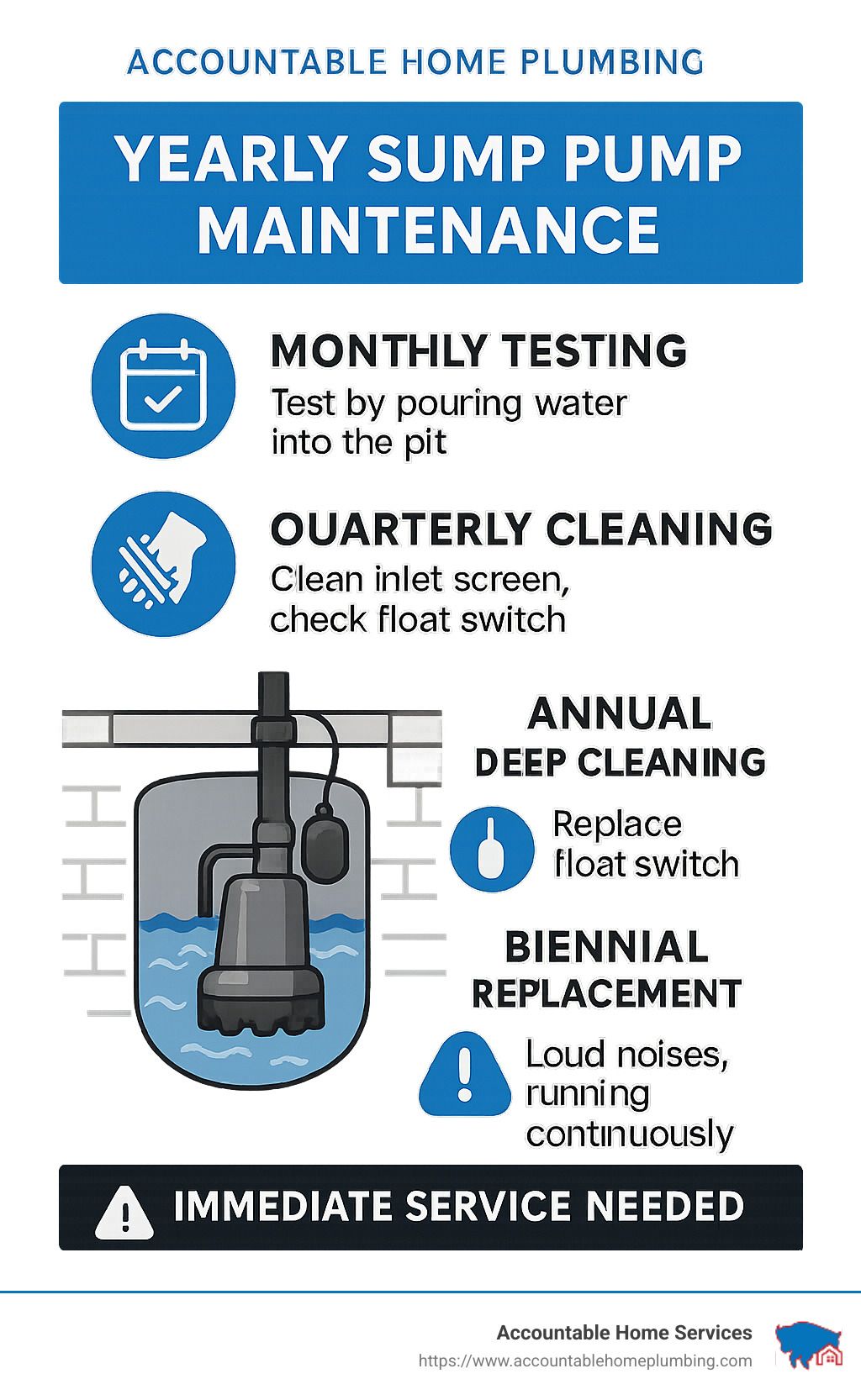
At Accountable Home Plumbing, we've seen how proper sump pump maintenance becomes the difference between a dry basement and a flooded one. It's not just about protecting your property—it's about protecting your peace of mind. Because when those storm warnings come (and in Colorado, they will), you deserve to rest easy knowing your home's first line of defense is ready for action.
How a Sump Pump Works & Why Upkeep Matters
Understanding how your sump pump actually works makes it easier to see why regular maintenance is so crucial. Think of your sump pump as your home's first line of defense against water damage—a silent guardian that springs into action when moisture threatens.
Your sump pump system consists of several essential components working together to keep your basement dry. At the heart of the system is the sump pit, a basin installed at the lowest point of your basement where groundwater naturally collects. When water in this pit reaches a certain level, it lifts the float switch, which activates the pump. The impeller then spins rapidly, forcing water through the discharge line and safely away from your home's foundation. A check valve prevents that water from flowing back into the pit once it's been pumped out.
During heavy rain or snowmelt—events we're all too familiar with here in Denver—groundwater levels rise and enter your sump pit through drain tiles or natural soil seepage. This is when your pump needs to perform flawlessly. Many homeowners also install a battery backup system that keeps the pump running during power outages, which often coincide with severe storms when you need your pump most.
According to the Sump and Sewage Pump Manufacturers Association (SSPMA), sump pump maintenance isn't just recommended—it's essential for protecting your property. The SSPMA notes that "the float switch is the most common part that fails on a sump pump," and many manufacturers recommend replacing the float every two years.
Why is staying on top of maintenance so important? The facts speak for themselves:
A failed sump pump during heavy rain can cause thousands of dollars in basement flooding damage. The average replacement cost for a sump pump is about $800, but with proper care, you can extend your pump's life well beyond the typical 7-10 years. Most frustratingly, sump pump failures tend to occur during critical periods when they're needed most—often because they've sat dormant and unmaintained for months.
Here in Colorado, our weather can change in an instant. One day it's sunny and dry, the next we're dealing with rapid snowmelt or sudden downpours. Your sump pump might not run for months at a time, but when that spring storm hits or the snow starts melting, it needs to work without hesitation. Regular sump pump maintenance ensures it's always ready when you need it most.
Sump Pump Maintenance Schedule & Step-By-Step Guide
Creating a maintenance calendar isn't just smart homeownership—it's peace of mind in a bottle. I've seen how a simple maintenance routine can save Denver homeowners thousands in potential water damage. Let's break down how to keep your sump pump running smoothly year-round.
Essential Maintenance Tools
Before rolling up your sleeves, gather your toolkit: a bucket, screwdriver, pliers, garden hose, wet/dry vacuum, wire brush (an old toothbrush works great), white vinegar, rubber gloves, safety goggles, and a flashlight. If you're feeling fancy, a multimeter can help check electrical connections, but it's not essential for basic maintenance.
Monthly Sump Pump Maintenance Checklist
Monthly check-ups are like quick health screenings for your pump—especially important during our Denver spring snowmelt or summer thunderstorm seasons. Just 5-10 minutes a month can prevent disaster.
1. Power Cord Check Is your pump still plugged in? It sounds silly, but I can't tell you how many emergency calls we've had where Fido or the kids accidentally unplugged the cord while playing in the basement. Make sure that cord is secure and damage-free.
2. Inspect the Inlet Screen Your pump's inlet screen is its first line of defense. Grab your flashlight and take a peek—is it clear of debris? If you spot buildup, make a note to give it some extra attention during your quarterly cleaning.
3. Perform the Bucket Test This is your most important monthly task, and it couldn't be simpler:
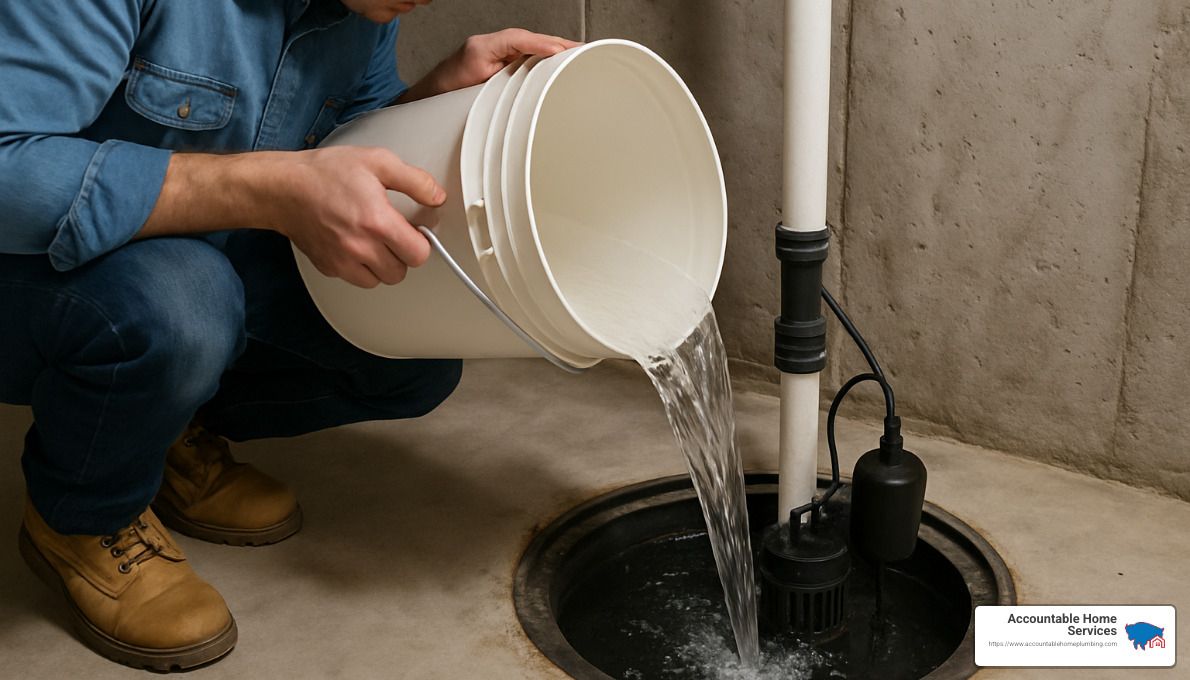
Pour a 5-gallon bucket of water into your sump pit and watch the magic happen. The float should rise smoothly, the pump should kick on without strange noises, and the water should pump out completely before shutting off. It's that simple, and yet this test alone catches about 80% of potential failures before they happen.
4. Check Pump Position Your pump should be standing tall and proud—not tilting like the Tower of Pisa. Vibrations during operation can nudge it off-kilter, which might prevent the float switch from working properly.
5. Sniff for Odors Trust your nose! Musty smells often signal mold or mildew growing in your sump pit. If something smells off, your pit might need a deeper clean than usual.
"I had a customer in Arvada who swore her pump was fine despite the smell," shares Mike from our team. "When we checked, her float was stuck because of mold growth. One simple monthly check could have prevented her flooded basement."
Quarterly Sump Pump Maintenance
As the seasons change, so should your maintenance routine. Every three months, give your pump some extra TLC—especially if you're in Westminster or Arvada where the water tables run high.
Power off first! Safety isn't just a suggestion—it's a requirement. Always unplug your pump before getting hands-on with maintenance.
Your quarterly checklist includes a thorough inlet screen cleaning (that water-vinegar mix works wonders on stubborn grime), a complete float switch inspection to ensure free movement, and a careful check of your discharge line for cracks, clogs, or improper slope.
If you've invested in a battery backup system (smart move for Colorado's unpredictable power outages), now's the time to test it. Unplug the main pump, pour water in, and make sure your backup jumps into action like a reliable friend.
Annual Sump Pump Maintenance Deep Dive
Spring cleaning isn't just for closets! Early spring—before the rainy season hits—is perfect for your pump's yearly physical. This is especially crucial for homeowners in flood-prone areas like Broomfield and Boulder.
1. Full Pump Removal and Inspection Safety first—disconnect power at the breaker (not just the plug). Disconnect your pump from the discharge pipe and gently lift it from its pit. Place it somewhere you can work, like a utility sink or on a tarp.
2. Deep Clean the Pump Give your pump a spa day! Rinse the housing, gently remove caked-on debris, check the impeller for damage, and clean all external components. This isn't just about cleanliness—it's about spotting potential problems before they become emergencies.
3. Pit Cleaning While the pump's out, vacuum any standing water from the pit and remove sediment or debris. A simple 1:1 water-to-vinegar solution works great for disinfecting without harming septic systems (avoid bleach!). A clean pit means fewer odors and better pump performance.
4. Bearing Lubrication (If Required) Not all pumps need lubrication—check your owner's manual before grabbing the oil can.
5. Check Valve Inspection Your check valve is like the bouncer at a club—it only lets water go one way. Remove and inspect it for debris or mineral buildup. If it's stuck or damaged, replace it. Most need replacement every 2-3 years anyway.
6. Discharge Pipe Flush Run clean water through the entire discharge line to clear any buildup that could restrict water flow when you need it most.
7. Reassembly and Testing Return your pump to its pit, reconnect everything, restore power, and perform a bucket test to verify it's working properly.
8. Record Keeping Keep notes on your maintenance like you would for your car. Date, observations, parts replaced—this history helps identify patterns and predict when replacement might be needed.
"During our annual inspections, we often find that a pump's check valve is stuck open, causing the pump to cycle constantly," says our lead technician at Accountable Home Plumbing. "This single issue can cut a pump's lifespan in half if not addressed."
Consistent sump pump maintenance isn't just about avoiding flooding—it's about protecting your home's foundation, preventing mold growth, and extending the life of your equipment. With this schedule, you're well on your way to keeping your basement dry for years to come.
Troubleshooting, Backup Power & Professional Help
Even with the most diligent maintenance routine, sump pumps sometimes develop issues. After all, they work hard under demanding conditions! Knowing how to troubleshoot common problems can save you from unexpected flooding and those expensive emergency service calls that always seem to happen at 2 AM during the worst storm of the year.
Common Warning Signs and Solutions
Your sump pump communicates with you through sounds and behaviors. Learning to interpret these signals is like understanding a new language—one that can save your basement!
When you hear grinding noises, that's usually your pump telling you something's caught in the impeller or the bearings are wearing out. Rattling sounds often point to a damaged impeller or mounting that's come loose over time. And that gurgling noise? Usually it's related to check valve issues or air trapped in your system.
If your pump runs non-stop, don't ignore it! Continuous running typically means one of four things: your float switch is stuck, your check valve is letting water cycle back into the pit, your pump is too small for your water volume, or your home sits on a high water table that might need a secondary pump system.
Float switch failures are incredibly common—in fact, they're the number one reason for sump pump problems. Watch for signs like a pump that won't turn on when water is present, won't turn off after draining, or has a switch that feels stuck when you test it manually.
Short cycling—when your pump turns on and off rapidly—is hard on your equipment and your electric bill. Check for a stuck float, inspect your check valve for backflow issues, and make sure your pit is properly sized (it should be at least 24" deep and 18" wide for effective operation).
Backup Power Options
Here in Colorado, power outages often coincide with our biggest storms—exactly when your sump pump maintenance pays off and you need your system working flawlessly. That's why we strongly recommend a backup power solution for every Denver Metro homeowner.
Battery backup systems act like a reliable insurance policy for your basement. These secondary pumps kick in automatically when power fails or when your primary pump can't keep up with water volume. A good battery backup will typically run 24-48 hours on a fully charged battery, though they do require regular testing and battery replacement every 2-5 years. Most modern systems include alarm features that alert you when they've activated—a real blessing when you're sleeping through a midnight thunderstorm.
For homes in areas with frequent outages, generator options provide extended protection. Portable generators require you to set them up during outages (not fun in a downpour!), while automatic standby generators offer seamless protection with no midnight trips to the garage. Whichever you choose, make sure it's properly sized to handle your pump's power needs—we can help determine the right capacity for your system.
Freezing Discharge Concerns
Our Colorado winters bring a unique challenge to sump pump maintenance: frozen discharge lines. When your carefully pumped water freezes in the discharge pipe, it creates a blockage that can cause your entire system to fail.
Ensure your exterior discharge pipes have proper slope to encourage complete drainage. Consider insulating any exposed portions of the discharge line, especially where they exit your home. Some homeowners benefit from a "freeze guard" attachment that provides a secondary discharge point if the main line freezes—particularly helpful for homes in higher elevations around Boulder and Evergreen.
Insurance Considerations
Many homeowners are shocked to find that standard insurance policies often don't cover sump pump failures. Before disaster strikes, consider adding specific water backup coverage to your policy. Keep documentation of your sump pump maintenance to support potential claims, and take time to understand your coverage limitations and exclusions.
If you're experiencing issues beyond basic maintenance, don't wait until you're ankle-deep in water! Our emergency repair services are available 24/7 throughout the Denver Metro area, ready to help when you need it most.
When to Call a Pro & What It Costs
While regular sump pump maintenance can extend your system's life, there comes a time when professional help is necessary. Here are clear signs that it's time to give us a call at Accountable Home Plumbing:
Age is a major consideration—pumps older than 7-10 years should be professionally evaluated, even if they seem to be working fine. For pumps over 5 years old that need repairs, replacement is often more economical in the long run than fixing individual components.
Watch for performance red flags like water in your basement despite a running pump, repeated failures despite your maintenance efforts, a motor that hums but doesn't actually pump water, visible rust on the pump housing, or excessive vibration during operation. These are all signs your system needs professional attention.
Electrical concerns should never be ignored. If you notice tripping circuit breakers, burning smells from the pump, or any electrical oddities related to the system, it's time for expert help. Water and electricity don't mix, and DIY electrical repairs can be dangerous.
Denver Metro municipalities have specific requirements for discharge locations (typically 20+ feet from your foundation), pit cover specifications, and backflow prevention. Our team knows these local codes and ensures your system meets all requirements.
At Accountable Home Plumbing, we believe in transparent pricing. We provide upfront costs with no hidden fees for all sump pump services, so you'll know exactly what to expect before any work begins. A professional inspection typically costs between $75-150, while full replacement ranges from $400-$1,200 depending on pump type, capacity, and whether backup systems are included.
For homes in flood-prone areas of Boulder, Longmont, and other parts of our service area, we recommend professional annual inspections even if you're diligent about DIY maintenance. An expert can spot potential issues before they become emergencies.
Our general plumbing services include comprehensive sump pump evaluations with honest recommendations based on your specific situation—never upselling you on equipment you don't need.
Frequently Asked Questions about Sump Pump Maintenance
How often should sump pump maintenance be done?
Let's face it – nobody wakes up excited about sump pump maintenance! But this simple routine can save you from a flooded basement nightmare.
Sump pump maintenance follows a pretty straightforward schedule that I recommend to all my Denver area customers:
Monthly checks are your first line of defense – just a quick visual inspection and that simple bucket test I mentioned earlier. Quarterly, you'll want to clean that inlet screen and make sure the float moves freely. Once a year, usually in early spring before our Colorado rainy season, set aside an hour for a deep clean and thorough inspection.
Every couple of years, replace that float switch – it's the part that fails most often. And after about 7-10 years of faithful service, start thinking about a full replacement before your pump decides to retire during a major storm!
If your washing machine drains into your sump or you live in areas with high water tables like parts of Westminster or Thornton, bump up your cleaning schedule. I've seen pumps in these situations get gunked up much faster than normal.
How do I test if my sump pump is working?
The bucket test is your best friend when it comes to checking if your pump is alive and well. It's simple, takes about five minutes, and gives you real peace of mind.
Grab a 5-gallon bucket, fill it with water, and slowly pour it into your sump pit. Watch as the float rises – it should smoothly activate the pump when the water reaches a certain level. The pump should kick on, remove all the water, and then shut itself off automatically.
If anything seems off during this test – maybe the pump doesn't turn on, runs too long, makes strange noises, or the water doesn't fully drain – that's your cue to investigate further or give us a call. Many of our emergency service calls could have been prevented with this simple test!
What keeps my pump running during power outages?
Isn't it ironic that power often goes out exactly when you need your sump pump most – during heavy storms? Here in Colorado, we see this happen all too often, which is why I strongly recommend having a backup power solution.
Battery backup sump pumps are the most popular option among our Denver Metro customers. These secondary pumps kick in automatically when power fails or when your main pump can't keep up with incoming water. They typically provide about 24-48 hours of protection on a fully charged battery – enough to get through most outages.
Water-powered backups are another interesting option that uses municipal water pressure to create suction that removes water. They require no electricity but do use municipal water and only work with city water systems, not wells. They can run indefinitely during an outage, but you'll see the water usage on your bill.
Generator connections are the premium solution. Whether you choose a portable generator you manually set up during outages or an automatic standby generator that kicks in within seconds of a power failure, this option can run indefinitely as long as you have fuel.
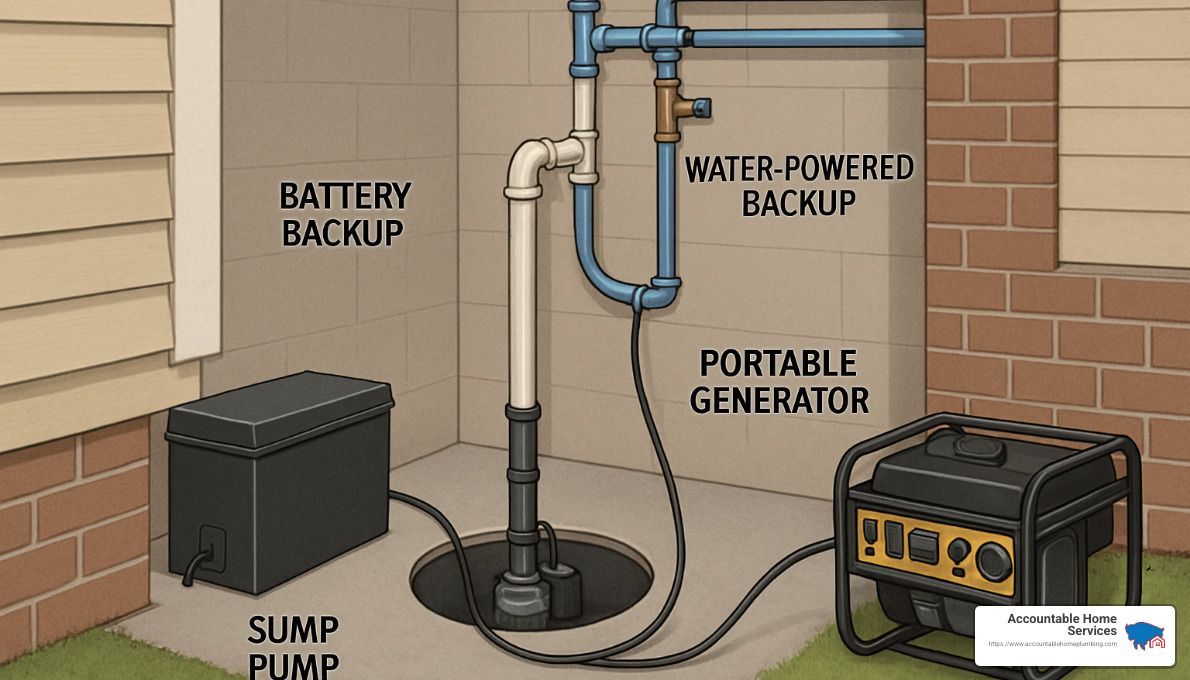
For most homeowners in our service area, I recommend at least a battery backup system. They're reliable, relatively affordable, and provide that critical protection when you need it most. For homes in flood-prone areas or where basement flooding would be catastrophic, an automatic standby generator offers the ultimate peace of mind.
At Accountable Home Plumbing, we've helped countless homeowners select and install the right backup system for their specific needs and budget. The investment is always worth it the first time your lights go out during a downpour and your basement stays dry!
Conclusion
Sump pump maintenance isn't just a household chore—it's your first line of defense against the unpredictable Colorado weather that can turn your cozy basement into an indoor swimming pool overnight.
Taking care of your sump pump is like having insurance that actually works for you every day. With the regular maintenance steps we've outlined, you're not just extending your pump's life beyond the typical 7-10 year lifespan—you're protecting your home's foundation, your stored belongings, and frankly, your sanity during those intense spring snowmelts and summer thunderstorms.
I've seen the difference proper maintenance makes firsthand. Homeowners who follow a simple maintenance schedule almost never call us for flooding emergencies. Meanwhile, those who neglect their pumps often end up with thousands in water damage—usually during the biggest storm of the year when every plumber in Denver is booked solid.
The most heartbreaking calls we get are from folks who find their sump pump isn't working only after finding inches of water in their basement. By then, family photos, heirlooms, and expensive appliances might already be damaged beyond repair.
Here's what regular maintenance does for you:
- Saves you money by preventing costly emergency replacements
- Identifies small issues before they become basement-flooding disasters
- Gives you peace of mind during heavy rainstorms
- Protects your home's value by preventing water damage and mold
Most sump pump failures happen during the worst possible time—when rain is pouring down and water tables are rising. A properly maintained pump stands ready when nature tests it the hardest.
At Accountable Home Plumbing, we're your neighbors in the Denver Metro area. Our team lives and works in the communities we serve—from Westminster to Thornton, Broomfield to Boulder, and everywhere in between. We understand the local conditions that make sump pumps so essential in our region.
Whether you need a quick maintenance check, want to install a backup system before the next big storm, or it's time for a complete replacement, our sump pump and water control services are just a phone call away. And yes, we offer 24/7 emergency service with the upfront, transparent pricing we're known for.
Don't wait until water is seeping across your basement floor. A simple maintenance check today could save you from a very wet, very expensive tomorrow. Your future self (and your dry basement) will thank you.
